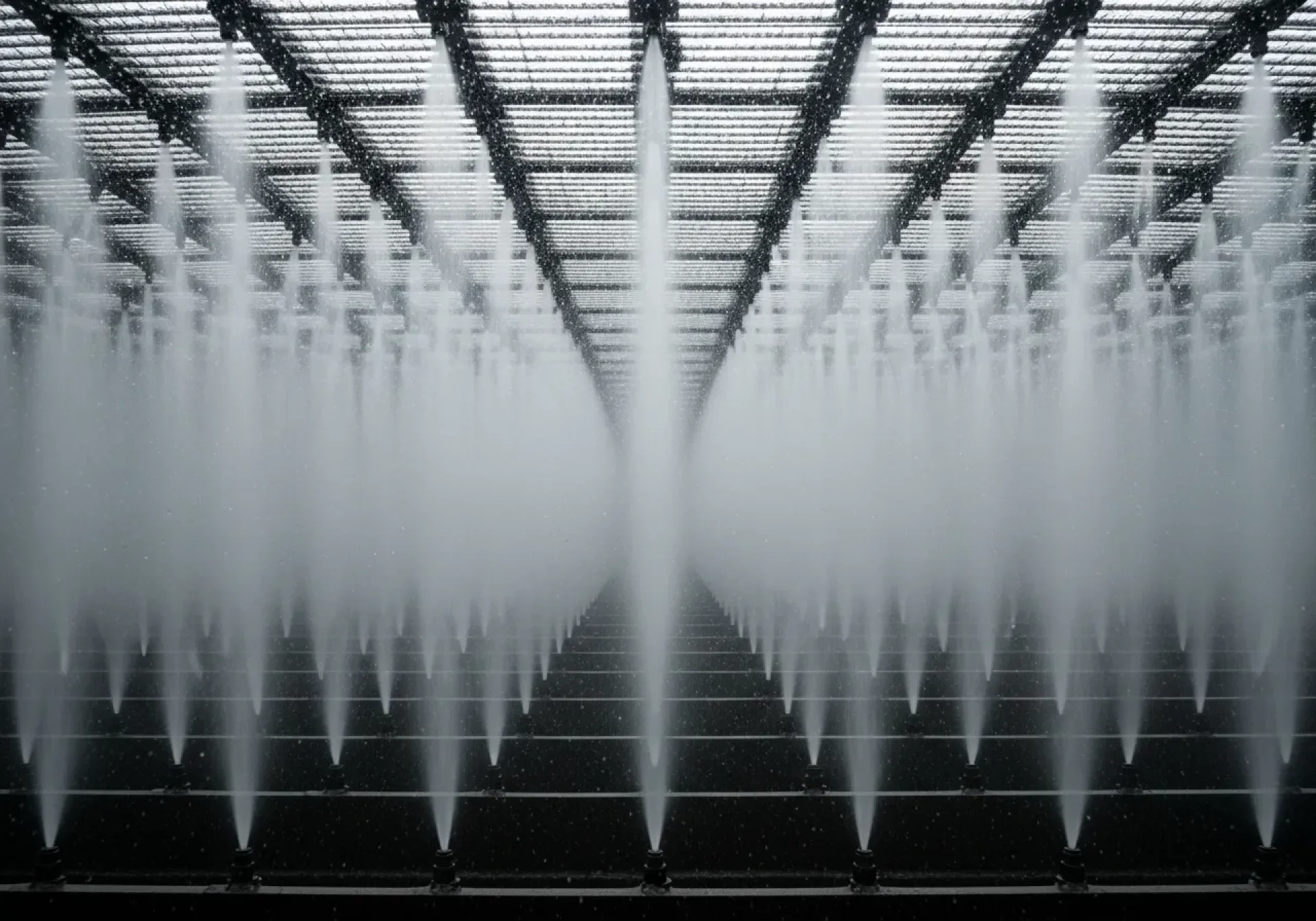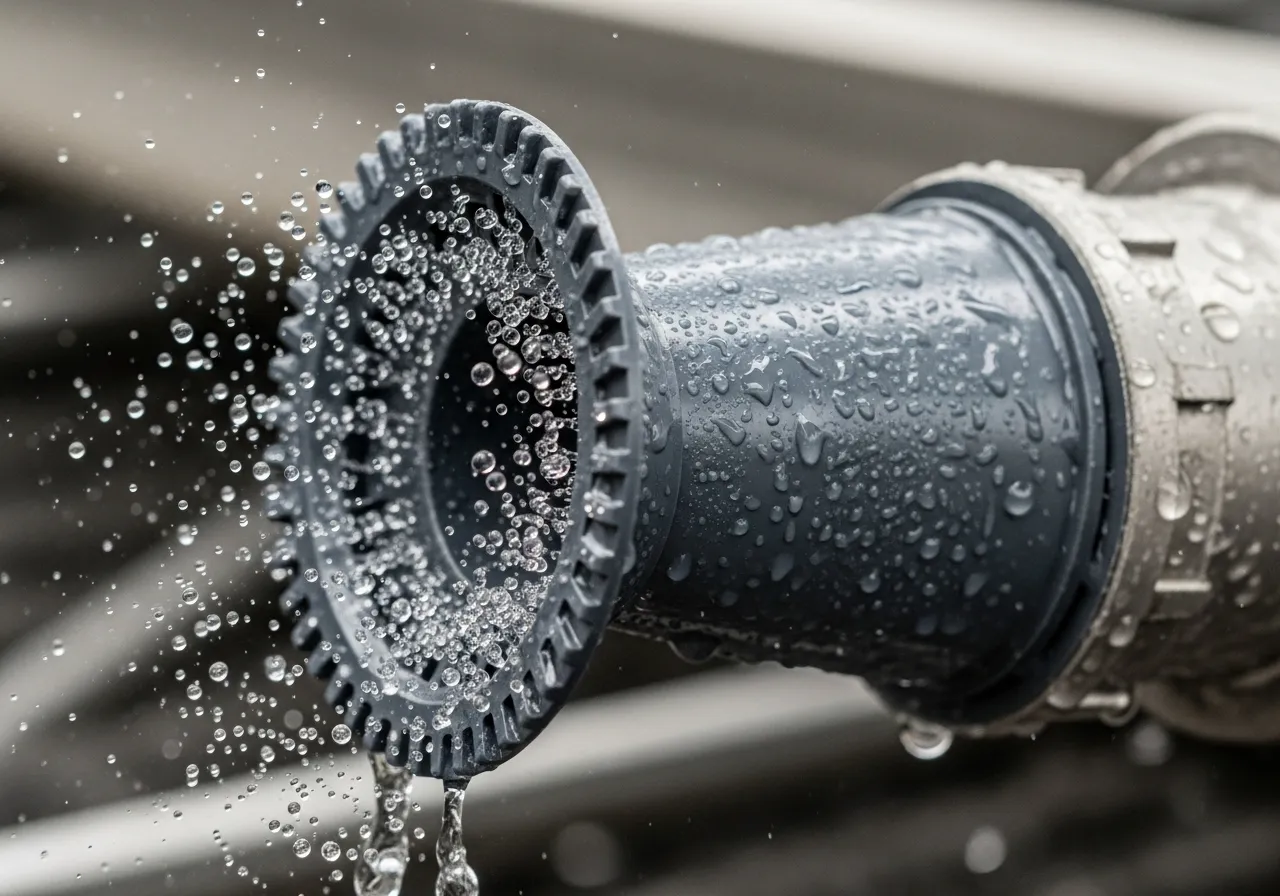Understanding Spray Nozzles in Cooling Towers

In industrial cooling systems, or Cooling Towers, one of the most critical and often overlooked components is the spray nozzle. Its function is to distribute hot water into fine droplets, maximizing the surface area exposed to the air. This process allows heat to be transferred from the water efficiently and quickly before the cool water flows back into the system for reuse.
Understanding the working principle, importance, and types of spray nozzles helps us select the appropriate system, maintain it correctly, and promptly troubleshoot any issues. This article will take you deep into every aspect of cooling tower spray nozzles to ensure your cooling system operates at peak efficiency and sustainability.
What is a Spray Nozzle?
When discussing the heart of a Cooling Tower's heat rejection system, it's undeniable that the spray nozzle is one of the most vital components. Generally, the spray nozzle's main job is to take hot water from the production process and spray it out as fine droplets, distributing it evenly across the area inside the cooling tower.
The goal of atomizing the water is to increase the surface area contact between water and air as much as possible. This is a key factor enabling Evaporative Cooling. The hot water releases its latent heat into the atmosphere in the form of water vapor, causing the water itself to cool down before being reused in various processes.
Operating Principle of Spray Nozzles
The operation of a spray nozzle relies on water pressure forcing water through a specially designed orifice. When water is forced through this small opening at high velocity, it breaks apart into small droplets or a fine mist. The size and distribution pattern of these droplets vary depending on the design of each nozzle type.
The importance of nozzle design lies in creating the "optimal droplet" meaning an even distribution of water at a suitable size. Droplets should not be too small, which causes them to be carried out of the tower (drift), nor too large, which reduces cooling efficiency. This precise design is the key to achieving the maximum efficiency of the cooling system.
Types of Spray Nozzles
There are various types of spray nozzles used in cooling towers, each designed for different purposes and applications. Selecting the right nozzle for the specific cooling tower type and operating conditions will directly impact cooling efficiency and the overall lifespan of the system. Let's look at the main types available.
Understanding the specific characteristics of each nozzle type helps engineers and system administrators make informed decisions to achieve the best and most cost-effective performance. The right nozzle can significantly reduce operational issues and boost the cooling system's efficiency.
High-Impact Nozzles
High-impact (or high-pressure) nozzles are often used in situations requiring rapid and thorough water distribution. The high pressure allows them to spray over a wide area with significant force. This design is suitable for large cooling towers that require high water volume and spray power to cover the heat transfer area effectively.
Misting Nozzles
Misting nozzles are another popular type, especially in systems requiring extremely fine droplets, almost like a fog. Spraying water in this mist form massively increases the surface area contact between water and air, leading to highly efficient heat transfer. They are ideal for cooling towers focused on rapid water temperature reduction.
Atomizing / Cone Nozzles
Atomizing nozzles, also known as Full Cone or Hollow Cone Nozzles, are the most common type found in general cooling towers. These nozzles distribute water as fine, uniform droplets with a stable spray pattern, ensuring even water distribution and consistent cooling performance.
Why Use Spray Nozzles in a Cooling Tower?
Spray nozzles are not just simple components; they are a critical factor enabling the cooling tower to work at its full potential. Installing the right nozzles helps maximize cooling efficiency and also benefits the overall operation of the industrial system. Let's explore why spray nozzles are so important.
Understanding the role and function of spray nozzles helps us see the bigger picture: investing in quality nozzles is a worthwhile investment that positively impacts factory output and equipment longevity in the long run.
Importance in Heat Rejection
Spray nozzles play a vital role in heat rejection as they are the part that turns hot water into fine droplets. This increase in water-to-air surface area is the primary mechanism for drawing heat out of the water via evaporation. Without nozzles, or if the nozzles perform poorly, heat transfer becomes highly inefficient, and the cooling tower cannot reduce the water temperature as required.
Benefits of Water Distribution
Even water distribution across the fill media inside the cooling tower is the main benefit of spray nozzles. Excellent distribution ensures that every drop of water has the opportunity to exchange heat with the air thoroughly, which maximizes the efficiency of water temperature reduction. Furthermore, proper distribution helps prevent "hot spots" that can decrease performance.
Selecting the Right Spray Nozzle
Choosing a spray nozzle for a cooling tower is not something to be overlooked, as it is a key factor affecting the entire system's performance. An improper choice can lead to numerous problems, such as inefficient cooling, energy waste, or even long-term equipment damage. Therefore, careful consideration is essential.
To ensure you get the maximum benefit from your cooling tower system, the decision should be based on complete information and consultation with experts to find a nozzle that truly meets the specific needs of your system and operating environment.
Consider Performance
Performance is the first factor to prioritize. A good nozzle should have a design that ensures even water distribution and creates droplets of the optimal size for maximum heat transfer. You should consider the flow rate, spray pattern, and the ability to maintain the water temperature at the desired level, which is the core of the cooling tower's function.
Maintenance
While performance is crucial, ease of maintenance is equally important. Nozzles designed for easy disassembly or cleaning will save time and maintenance costs. Additionally, the manufacturing material should be resistant to corrosion and scale buildup to extend its lifespan and reduce the frequency of replacement.
Common Problems with Spray Nozzles
Although spray nozzles are vital components, they are not without problems. Continuous use in an environment with constant water and air circulation inevitably leads to wear and other issues that can reduce performance. Knowing these potential problems in advance helps in prevention and timely correction.
Regular inspection and maintenance are key to extending the life of spray nozzles and keeping the cooling tower system running efficiently. Neglecting minor issues can lead to bigger damage and higher repair costs in the future.
Clogging
Clogging is the most common problem for spray nozzles. The main cause is the accumulation of scale, minerals in the water, sediment, or even various debris mixed in the water. When a nozzle clogs, water distribution becomes uneven, reducing cooling efficiency and potentially leading to higher energy consumption to maintain the system's temperature.
Material Wear and Tear
Continuous operation under high water flow and heat conditions naturally causes the nozzle material to wear down. Wear can include chemical corrosion from substances in the water or erosion from high-velocity water flow. When this occurs, it changes the original spray pattern, making water distribution less efficient.
How to Maintain Spray Nozzles for Long Life
Maintaining spray nozzles in a cooling tower for efficient and long-lasting operation is essential for the continuous function of the cooling system and for reducing maintenance costs. Regular care helps prevent potential problems and truly extends the equipment's lifespan.
Following correct maintenance guidelines not only saves costs in the long run but also helps protect the environment by reducing water and energy consumption. It also ensures the cooling tower system is always ready when needed.
Regular Cleaning
Regular cleaning of spray nozzles is the heart of maintenance. They should be inspected and cleaned to remove blockages like scale, sediment, or debris at least 1-2 times a year, or more frequently if the water quality is poor. Consistent cleaning ensures the nozzles can always distribute water at full efficiency.
Performance Inspection
Besides cleaning, inspecting the performance of the nozzles is not to be overlooked. The spray pattern, pressure, and droplet distribution should be checked to ensure they still meet specifications. If any nozzle shows signs of distribution problems, it should be considered for immediate replacement or repair to prevent it from affecting the tower's overall performance.
New Technologies for Spray Nozzles
The industrial sector is continuously evolving, as is the technology for cooling tower spray nozzles. Manufacturers are constantly innovating to increase operational efficiency, reduce energy consumption, and extend equipment life. These advancements are highly beneficial for operators seeking value and long-term sustainability.
Adopting new technologies not only helps the cooling tower system work better but also simplifies system management, reduces the maintenance burden, and lessens environmental impact, which is a significant step in modern industrial development.
Smart Nozzles
One interesting technology is "Smart Nozzles," which may come with sensors that detect temperature, humidity, or even water quality. The system then automatically adjusts the spray pattern or flow rate to achieve maximum cooling efficiency at all times. They can also send alerts when problems like clogging occur, allowing for more proactive maintenance.
More Durable Materials
Advancements in material science have led to nozzles made from materials far more resistant to corrosion, wear, and scale buildup. These materials, such as special engineering plastics or unique metal alloys, help extend the nozzle's lifespan, reduce replacement frequency, and tangibly lower maintenance costs, which is especially beneficial in harsh operating environments.
Frequently Asked Questions (FAQ)
We've compiled frequently asked questions about cooling tower spray nozzles to help you understand the function and benefits of this component more clearly. If you have more questions, you can always ask an expert.
How do spray nozzles work in a cooling tower?
Nozzles take hot water and spray it out as fine droplets to increase the surface area contact with air. This promotes evaporative cooling, providing cool water back to the system.
What are the benefits of using spray nozzles for cooling?
The main benefit is maximizing heat transfer efficiency and rapidly reducing water temperature, which improves system performance and helps conserve water in the process.
What should be considered when selecting the right spray nozzle?
You should consider the required flow rate, a spray pattern suitable for the cooling tower, material durability for the environment, and ease of maintenance for sustainable use.
What are the maintenance guidelines for spray nozzles?
The best practice is to regularly clean and inspect the spray performance to prevent clogging and wear. This will help extend their lifespan and keep the system operating at peak efficiency.
We hope this information is useful for those seeking knowledge about spray nozzles or considering an upgrade to their cooling tower system. A thorough understanding will help you make confident decisions to achieve the most efficient and sustainable cooling system. If you need consultation or are looking for a solution tailored to your system, our team of experts is always ready to assist.



